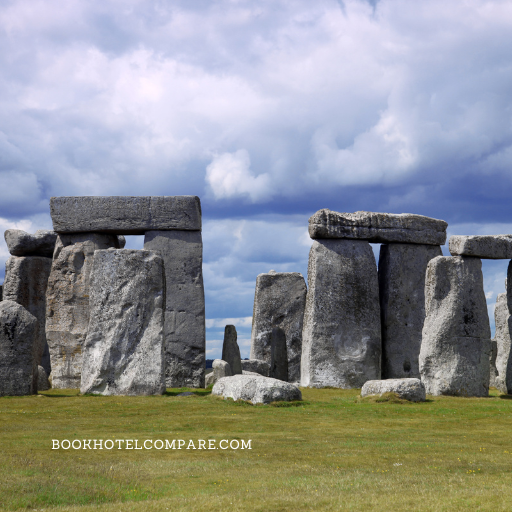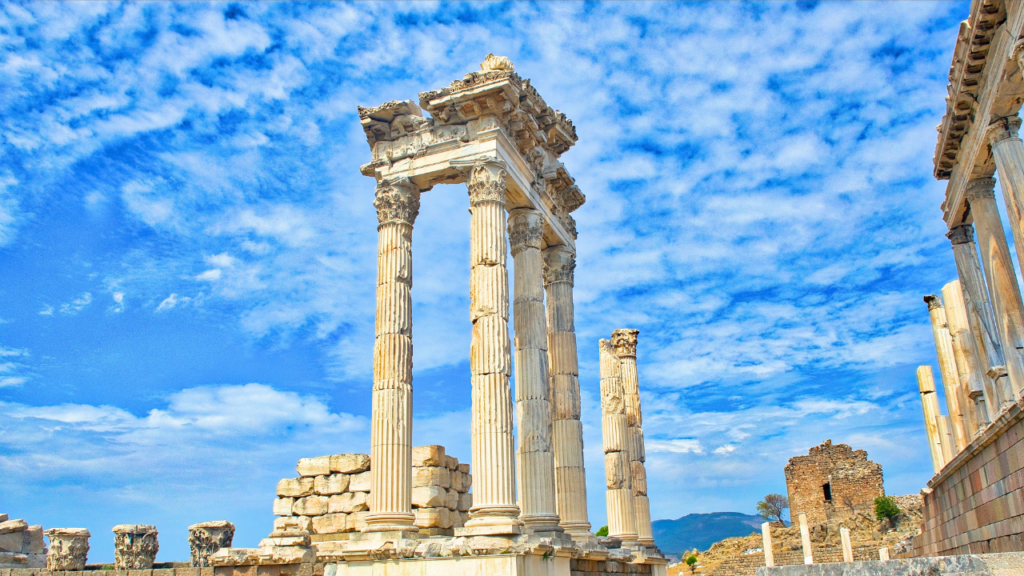Historical Sites Near Me
Historical sites stand as tangible links to the past, offering us a remarkable opportunity to step back in time and connect with the legacies of bygone eras. These sites, whether ancient ruins, preserved landmarks, or sacred spaces, serve as windows into the lives, cultures, and achievements of the people who once inhabited them.

As we walk in the footsteps of those who came before us, we gain a deeper appreciation for the intricate tapestry of human history and the significance of preserving these treasures for future generations.
From the towering pyramids of Egypt to the majestic castles of Europe, and from the iconic Great Wall of China to the intricate temples of Southeast Asia, historical sites span the globe, each offering a unique story waiting to be unraveled.
These sites bear witness to pivotal events, architectural marvels, artistic achievements, and the evolution of societies over centuries. Exploring them not only educates us about our shared heritage but also allows us to grasp the ingenuity and creativity of past civilizations.
Related Post – Hotels In Savannah Historic District
Significance of Historical Sites Near Me
The significance of historical sites transcends their physical structures. They evoke a sense of wonder and reverence, igniting our imagination as we envision the bustling marketplaces, the echoing footsteps of ancient rulers, and the echoes of philosophical discussions held within their walls.
By preserving these sites, we ensure that the stories they hold endure, serving as a bridge between past, present, and future.
As time marches forward and modernization reshapes landscapes, the preservation of historical sites becomes an urgent endeavor. Efforts to protect and conserve these sites are not only a testament to our respect for history but also a commitment to passing down the lessons and cultural richness of the past to future generations.
Historical sites remind us that we are part of an ongoing narrative, and by engaging with these sites, we can glean insights, inspiration, and a profound sense of connection with the human journey through time.
Factors to Consider When Visiting Historical Sites
One of the most important factors to consider when visiting a historical site is the time period it is from.
If you are visiting a site from the 18th century, you should be aware of the different social norms that existed at the time. For example, women did not typically travel without a male escort, and it was frowned upon for people of different social classes to intermingle.
Similarly, if you are visiting a site from the 20th century, you should be aware of the different political and social norms that existed at the time. For example, during the McCarthy era, it was controversial to be associated with communists, and it was common for people to keep their political opinions to themselves.
Another important factor to consider when visiting historical sites near me is the location of the site. For example, if you are visiting a site in Europe, you should be aware of the different architectural styles that existed in different parts of Europe at the time.
19 Most Popular Historical Landmarks
There are hundreds of historical sites. Out of them we have compiled a list of 19 popular historical landmarks. Check out here:
| SL. No. | Historical Sites | Location | Description |
| 1. | Independence Hall | Philadelphia, Pennsylvania | Birthplace of Declaration of Independence, Constitution |
| 2. | Liberty Bell | Philadelphia, Pennsylvania | Iconic symbol of American freedom |
| 3. | Mount Vernon | Mount Vernon, Virginia | Home of George Washington, 1st U.S. President |
| 4. | Colonial Williamsburg | Williamsburg, Virginia | Living-history museum showcasing colonial life |
| 5. | Gettysburg National Military | Gettysburg, Pennsylvania | Park Site of pivotal Civil War battle |
| 6. | Monticello | Charlottesville, Virginia | Residence of Thomas Jefferson |
| 7. | Ellis Island | New York City, New York | Historic immigration station |
| 8. | Statue of Liberty | New York City, New York | Symbol of freedom and democracy |
| 9. | Boston National Historical Park | Boston, Massachusetts | Sites related to the American Revolution |
| 10. | Mount Rushmore National Memorial | Keystone, South Dakota | Carving of Presidents Washington, Jefferson, Roosevelt, Lincoln |
| 11. | The Alamo San | Antonio, Texas | Historic mission and battle site |
| 12. | National Mall and Memorial Parks | Washington, D.C. | Iconic monuments like Lincoln Memorial, Washington Monument |
| 13. | Ford’s Theatre | Washington, D.C. | Site of President Lincoln’s assassination |
| 14. | Pearl Harbor National Memorial | Honolulu, Hawaii | Honors lives lost in Pearl Harbor attack |
| 15. | Golden Gate Bridge San | Francisco, California | Engineering marvel and city symbol |
| 16. | Manhattan Project National Historical Park | Los Alamos, New Mexico | Preserves history of atomic bomb development |
| 17. | Bunker Hill Monument | Boston, Massachusetts | Marks site of Battle of Bunker Hill |
| 18. | Ford’s Theatre | Washington, D.C. | Site of President Lincoln’s assassination |
| 19. | Jamestown Settlement | Jamestown, Virginia | Living-history museum of early English colonization |
Preserving and Protecting Historical Sites
Preserving and Protecting Historical Sites is a huge task and it’s one that we need to take seriously. Our history is something that we should be proud of and we need to do our best to protect it.
There are a lot of people who are interested in learning more about our history and our heritage, so we need to make sure that we are doing everything we can to keep these sites safe.
There are a lot of ways that we can do this and we need to be careful not to damage or destroy any of the historical sites.
We need to be conscious of our surroundings and make sure that we are doing everything we can to protect these sites.
Historical Landmarks Around The World
Historical landmarks are captivating portals to the past, offering us glimpses into the tales of civilizations long gone. These remarkable sites bear witness to pivotal moments, cultural achievements, and architectural marvels that have shaped the course of human history.
With each weathered stone, intricately carved pillar, or towering structure, historical landmarks tell stories of triumphs, challenges, and the enduring spirit of innovation.
From the colossal pyramids of ancient Egypt to the majestic palaces of Europe, these landmarks stand as tangible connections to our ancestors’ aspirations and achievements. They serve as testaments to the craftsmanship, artistry, and engineering prowess of their respective eras.
Some landmarks, like the Great Wall of China, echo the determination to protect and defend, while others, like the Taj Mahal, resonate with the depth of human emotion and devotion.
Stepping into these hallowed grounds, we’re transported back in time, walking in the footsteps of those who came before us. The grandeur of the Colosseum in Rome conjures the roars of the crowds during gladiatorial contests, while the serene aura of Machu Picchu envelops us in the mystique of an ancient Incan civilization.
The intricate carvings of Angkor Wat and the meticulous geometry of the Alhambra remind us of the intricate cultural tapestries woven by different societies.
Historical landmarks not only evoke a sense of wonder and reverence but also encourage us to reflect on the shared heritage of humanity. They prompt us to contemplate the ingenuity, values, and aspirations that have shaped our world.
Whether it’s the symbolic Statue of Liberty welcoming immigrants or the awe-inspiring Pyramids of Giza standing as eternal memorials, these landmarks remind us of the threads that connect generations across time and space.
As we explore these landmarks, we not only encounter history but also gain insights into the trajectory of civilizations, the evolution of architecture, and the stories of individuals who dared to dream and build.
Through these ancient edifices and modern treasures, we’re invited to embark on a journey of discovery, learning, and appreciation for the remarkable tapestry of human existence.
15 Most Popular Historical Landmarks In The World
Historical landmarks are important sites that hold cultural, historical, or architectural significance. Here are a few famous historical landmarks from around the world:
1. Great Wall of China (China): A series of fortifications made of stone, brick, tamped earth, wood, and other materials, built to protect China from invasions.
2. Pyramids of Giza (Egypt): The three pyramids are the tombs of ancient Egyptian pharaohs and are one of the Seven Wonders of the Ancient World.
3. Machu Picchu (Peru): An Incan citadel situated in the Andes Mountains, often referred to as the “Lost City of the Incas.”

4. Colosseum (Italy): An ancient amphitheater in Rome, known for its gladiatorial contests and other public spectacles.
5. Taj Mahal (India): A stunning white marble mausoleum built by Mughal Emperor Shah Jahan in memory of his wife Mumtaz Mahal.
6. Acropolis of Athens (Greece): A citadel located on a rocky outcrop above the city of Athens, featuring iconic ancient Greek architecture like the Parthenon.
7. Eiffel Tower (France): An iron lattice tower located in Paris, celebrated for its innovative design and one of the most recognizable structures in the world.
8. Statue of Liberty (USA): A gift from France to the United States, this colossal neoclassical statue stands as a symbol of freedom and democracy.
9. Stonehenge (United Kingdom): A prehistoric monument consisting of a ring of standing stones, shrouded in mystery regarding its purpose and construction.
10. Angkor Wat (Cambodia): The largest religious monument in the world, originally built as a Hindu temple and later transformed into a Buddhist temple complex.
11. Alhambra (Spain): A palace and fortress complex known for its Islamic architecture, located in Granada, Spain.
12. Christ the Redeemer (Brazil): An iconic statue of Jesus Christ located in Rio de Janeiro, overlooking the city from the Corcovado mountain.
13. Petra (Jordan): An archaeological site featuring rock-cut architecture and water conduits, often referred to as the “Rose City” due to the color of the stone.
14. Forbidden City (China): A palace complex in Beijing that served as the imperial palace for multiple dynasties over centuries.
15. Mount Rushmore (USA): A sculpted mountain with the faces of four U.S. presidents—George Washington, Thomas Jefferson, Abraham Lincoln, and Theodore Roosevelt.
These are just a few examples, and there are many more historical landmarks across the globe that showcase the rich history and cultural heritage of different civilizations.
FAQs On Historical Sites
Why are historical sites important?
Historical sites are important because they help us connect with our past, learn about different cultures, and understand how societies have evolved over time.
They provide tangible links to history, preserving the legacy of civilizations and offering educational and inspirational experiences.
How are historical sites preserved?
Historical sites are preserved through careful maintenance, conservation efforts, and sometimes restoration. Preservation includes measures to prevent deterioration due to weather, pollution, and human impact.
Conservationists often use specialized techniques and materials to ensure the longevity of these sites.
What can you learn from historical sites?
Historical sites offer insights into various aspects of history, such as architecture, art, daily life, politics, and technology of the past.
They can reveal cultural practices, societal structures, and the context in which people lived, worked, and interacted.
How are historical sites different from museums?
Historical sites are physical locations that have historical significance, while museums are institutions that collect, preserve, and display artifacts related to history, culture, and science.
Historical sites often provide immersive experiences by allowing visitors to explore the actual locations where historical events occurred.
Can you take photographs at historical sites?
In many cases, photography is allowed at historical sites, but specific rules and restrictions may vary.
Some sites may have areas where photography is prohibited to protect sensitive artifacts or structures. It’s important to respect the guidelines of each site.
How can I support the preservation of historical sites?
You can support the preservation of historical sites by visiting them responsibly, following rules and guidelines, and contributing to reputable preservation organizations.
Your visits and donations can help fund conservation efforts and educational programs.
Conclusion
historical sites stand as time-traveling portals that bridge the gap between the past and the present. They offer us tangible connections to the aspirations, triumphs, and stories of civilizations that have shaped our world.
As we wander through the hallowed halls, intricate courtyards, and weathered structures, we are invited to unravel the threads of history and contemplate the legacies of those who came before us.
These sites are not mere remnants of the past; they are living testaments to human ingenuity, resilience, and cultural diversity. From the awe-inspiring grandeur of architectural marvels to the serene simplicity of ancient ruins, historical sites remind us of the spectrum of human experiences and the myriad ways societies have flourished, adapted, and left their mark on the world.
As we immerse ourselves in the stories whispered by the stones, we gain more than knowledge. We gain perspective. We learn that history is not confined to textbooks; it lives in the timeworn steps we tread, the intricate carvings we admire, and the echoes of the past that reverberate through time.
Historical sites invite us to engage in a dialogue with our ancestors, fostering a deep appreciation for the richness of cultures, the beauty of architecture, and the power of human imagination.
While these sites are often places of awe and inspiration, they also carry a responsibility. We are entrusted with the duty to preserve them for future generations, ensuring that the stories they hold continue to inspire and educate.
By honoring historical sites and the narratives they safeguard, we honor the collective journey of humanity—our shared heritage that unites us beyond the constraints of time.
So, enjoy the Historical sites near me with your family and friends.
